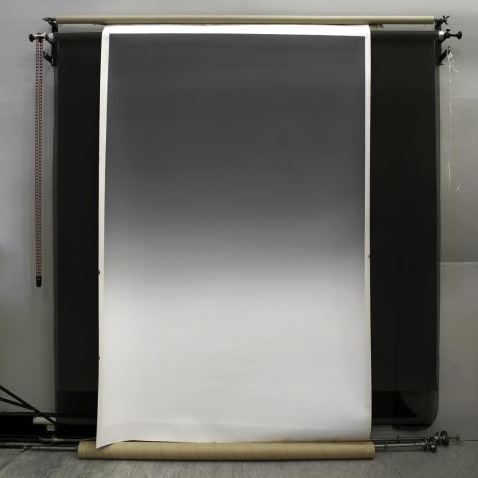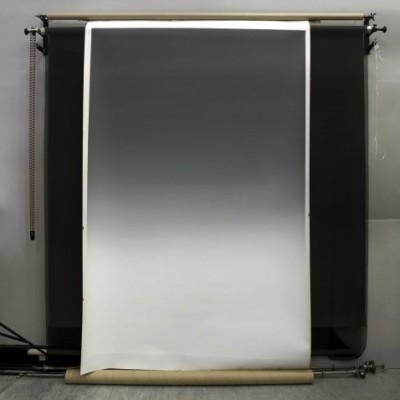
To mark its 30th anniversary, Belfast Exposed has organised an extensive exhibition of photographic work, displayed both at its premises on Donegall Street as well as at The MAC. The exhibition — Northern Ireland: 30 Years of Photography — “focuses on the growth of new, fine art documentary practices, more often produced for the gallery space and the photo book rather than for a press or media context”.
There is also a large publication of the same title, written by Colin Graham.
Also there are a series of events to examine the exhibition and book in more detail.
I attended a public discussion event, featuring curator Karen Downey, book author Colin Graham, and photographers Donovan Wylie, John Duncan, Mary McIntyre and Sylvia Grace Borda.
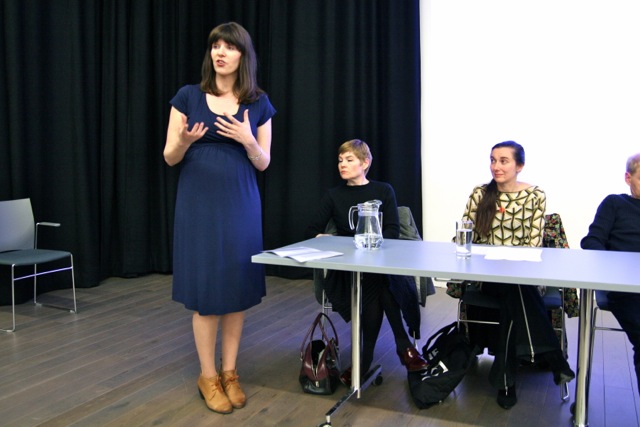
https://soundcloud.com/mrulster/20130517-belfast-exposed-01
Karen Downey was late from finishing a curator’s tour of the exhibition, as well as from being interviewed for BBC Radio Ulster’s Arts Extra programme (above). She described the background of the anniversary project and introduced the guest speakers.
https://soundcloud.com/mrulster/20130517-belfast-exposed-02
Colin Graham was previously a Reader in English at Queen’s University Belfast, and he described how his specialism in literature influences his critiques of photography. For example, he made the point that “the shape of something [presented] is as important as its context”. Also, that the act of photography is a self-conscious decision, literally snapshots of a journey made by the photographer.
In reviewing 30 years of photography in Northern Ireland, he listed a broad spectrum that included press photography, archive photographers, landscape photo books, Flickr photostreams and the more recent proliferation of Instagram and general increase in non-professional photography. In compiling the book, he didn’t attempt to survey them all, but to select and explain “why I liked what I liked”.

https://soundcloud.com/mrulster/20130517-belfast-exposed-03
Donovan Wylie explained how he returned to photography after he “lost faith in the single image”: making films was far more difficult.
Describing the invitation to undertake the Maze project work, he said that he repeatedly said no: “It represented everything I didn’t like about Northern Ireland.” But taking encouragement from others, he ultimately agreed. Yet he struggled to find a satisfactory strategy until, as he put it, he surrendered his resistance to the place, and worked with the logic of its design. Interestingly, here he described feeling less a photographer and more like an operator — a mixture of artist and documentarian.

https://soundcloud.com/mrulster/20130517-belfast-exposed-04
John Duncan, co-editor of Source magazine, introduced himself as someone who has been dwelling on Belfast for the past 25 years.
He showed a projected image of the first known photograph of Belfast, the clearing of buildings to make way for the construction of Custom House. This was part of his motivation for his Boom Town II project, photographs of billboard signs advertising “developers’ visions of what they think their patch of Belfast should look like”.
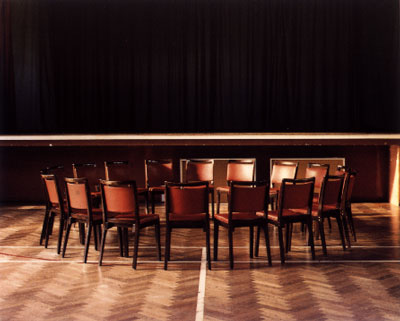
https://soundcloud.com/mrulster/20130517-belfast-exposed-05
Mary McIntyre was educated in fine art and sculpture, and identified herself as “an artist who uses photography”. Indeed, she said that her influences are more cinematic than photographic.
She “photographs atmospheres”, describing her work as a dialogue, where sometimes the subject matter speaks to her. “I take the image and it’s instinctive. I don’t know why I’ve taken it until later, sometimes much later, when it communicates with me.”

https://soundcloud.com/mrulster/20130517-belfast-exposed-06
Sylvia Grace Borda is a Canadian-born artist who spent five years in Northern Ireland, lecturing at Queen’s University Belfast between 2007-2009. She described how while she was able to guide her students towards successful projects, she found it more difficult to identify one that would satisfy herself. Her interest in documentary topography, by the likes of Charles Marville and Eugene Atget, combined with a fascination in Modernist architecture, led her to produce Churches.
In her travels back and forth to Canada, people there would ask her questions about Northern Ireland. As part of trying to satisfy their curiosity, she realised that Northern Ireland’s Modernist churches offered a visual symbol of its religious divide: “However, since the buildings are Modernist and were originally designed to be undecipherable in terms of faith association — the viewer is left confounded.”
She presented this symbol in the form of photographic images on dinner plates — a set of 16 (“not 12: too religious”). Why plates? Because they are tactile not monumental, and because they are fragile objects, “much like the political arrangements at Stormont”.
https://soundcloud.com/mrulster/20130517-belfast-exposed-07
The subsequent Q&A session started with a big question, what will the next 30 years of photography in Northern Ireland look like? Colin Graham answered with suggestions of internationalisation (mutual influences from home and abroad), portraiture without identity labelling (e.g. the work of Gareth McConnell), and landscape photography as an existential project.
In a question regarding the interests of the next generation of photographers in Northern Ireland, Donovan Wylie said that his course students at the University of Ulster are talking more about global issues than parochial ones. But a reply from the audience said that this was perhaps because such young people are consciously electing not to deal with the intricacies of communal politics in Northern Ireland. This provoked a quick review of Hannah Starkey’s work: she is from Northern Ireland but is it obvious in her work?
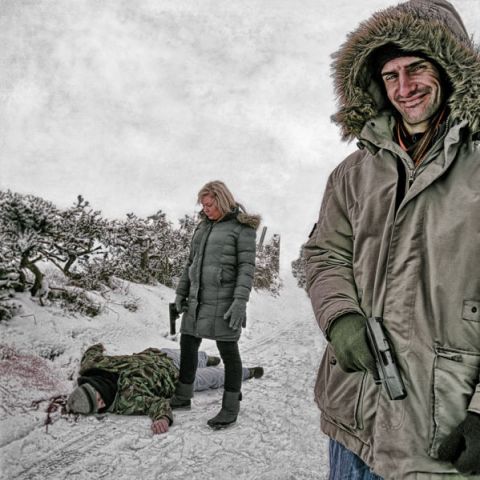
Here, Colin Graham suggested the work of Malcolm Craig Gilbert, Post Traumatic Exorcism, which Gilbert describes as images of the dreams inside his head. As a former RUC officer, the Northern Ireland influences are there to be seen. Yet the chosen theme of trauma can be interpreted and understood by a wider audience.
With a sense of wryness, Colin Graham mooted whether “Northern Ireland: 30 Years of Photography” condemned those exhibited to history. He looks forward to the next 30 years of photography in Northern Ireland, but wants new photographers to react to what has been done so far, not imitate it.
Northern Ireland: 30 Years of Photography exhibition is held at Belfast Exposed (21 Donegall Street) and The MAC (Saint Anne’s Square), from 10th May to 7th July. The accompanying book is available to purchase (£30) at both venues.
Originally posted at: http://mrulster.org/2013/05/19/northern-ireland-30-years-of-photography-discuss/
Peacebuilding a shared Northern Irish society ✌️ Editor 🔍 Writer ✏️ Photographer 📸 https://mrulster.com
Discover more from Slugger O'Toole
Subscribe to get the latest posts to your email.
